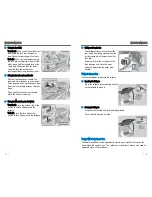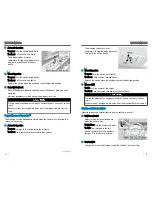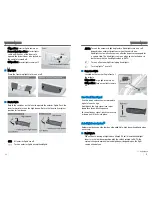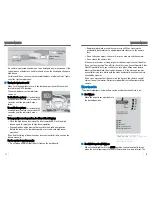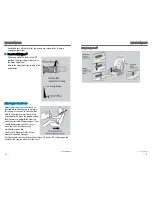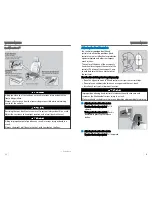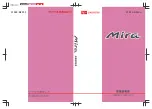
leave it unoccupied. Or, you may wish to get a smaller rear-facing child seat.
Placing a rear-facing child seat in the front seat can result in serious injury
or death during a crash.
Always place a rear-facing child seat in the rear seat, not the front.
n
Protecting Smaller Children
If a child is at least one year old and within the weight range indicated by
the child seat manufacturer, the child should be properly restrained in a
firmly secured forward-facing child seat.
We strongly recommend placing a
forward-facing child seat in a rear
seating position. Placing a forward-
facing child seat in the front seat can
be hazardous, even with advanced
front airbags that automatically turn the
passenger’s front airbag off. A rear seat
is the safest place for a child.
Placing a forward-facing child seat in the front seat can result in serious
injury or death if the front airbag inflates.
If you must place a forward-facing child seat in front, move the vehicle
seat as far back as possible, and properly restrain the child.
n
Selecting a Child Seat
Most child seats are LATCH-compatible (Lower Anchors and Tethers for
CHildren). Some have a rigid-type connector, while others have a flexible-
type connector. Both are equally easy to use. Some existing and previously
owned child seats can only be installed using the seat belt. Whichever type
you choose, follow the child seat manufacturer’s use and care instructions
as well as the instructions in this guide. Proper installation is key to
maximizing your child’s safety.
In seating positions and vehicles not equipped with LATCH, a LATCH
compatible child seat can be installed using the seat belt and a top tether
for added security. This is because all child seats are required to be
designed so that they can be secured with a lap belt or the lap part of a lap/
shoulder belt. In addition, the child seat manufacturer may advise that a
seat belt be used to attach a LATCH-compatible seat once a child reaches a
SAFETY INFORMATION
16 |
specified weight. Please read the child seat owner’s manual for proper
installation instructions.
Important considerations when selecting a child seat
Make sure the child seat meets the following three requirements:
• The child seat is the correct type and size for the child.
• The child seat is the correct type for the seating position.
• The child seat is compliant with Federal Motor Vehicle Safety Standard
213 or Canadian Motor Vehicle Safety Standard 213.
n
Installing a LATCH-Compatible Child Seat
A LATCH-compatible child seat can be installed in either of the two outer
rear seats. A child seat is attached to the lower anchors with either the rigid
or flexible type of connectors.
1. Locate the anchor marks affixed to
the base of the seat cushion.
2. Pull out the anchor covers under the
marks to expose the lower anchors.
Raise the head restraint to its
highest position.
3. Place the child seat on the vehicle
seat, then attach the child seat to
the lower anchors according to the
instructions that came with the child seat. Make sure that the lower
anchors are not obstructed by the seat belt or any other object.
If necessary, remove the cargo area cover
*1
4. Route the tether strap between the head restraint legs, and secure the
tether strap hook to the anchor.
SAFETY INFORMATION
| 17




















